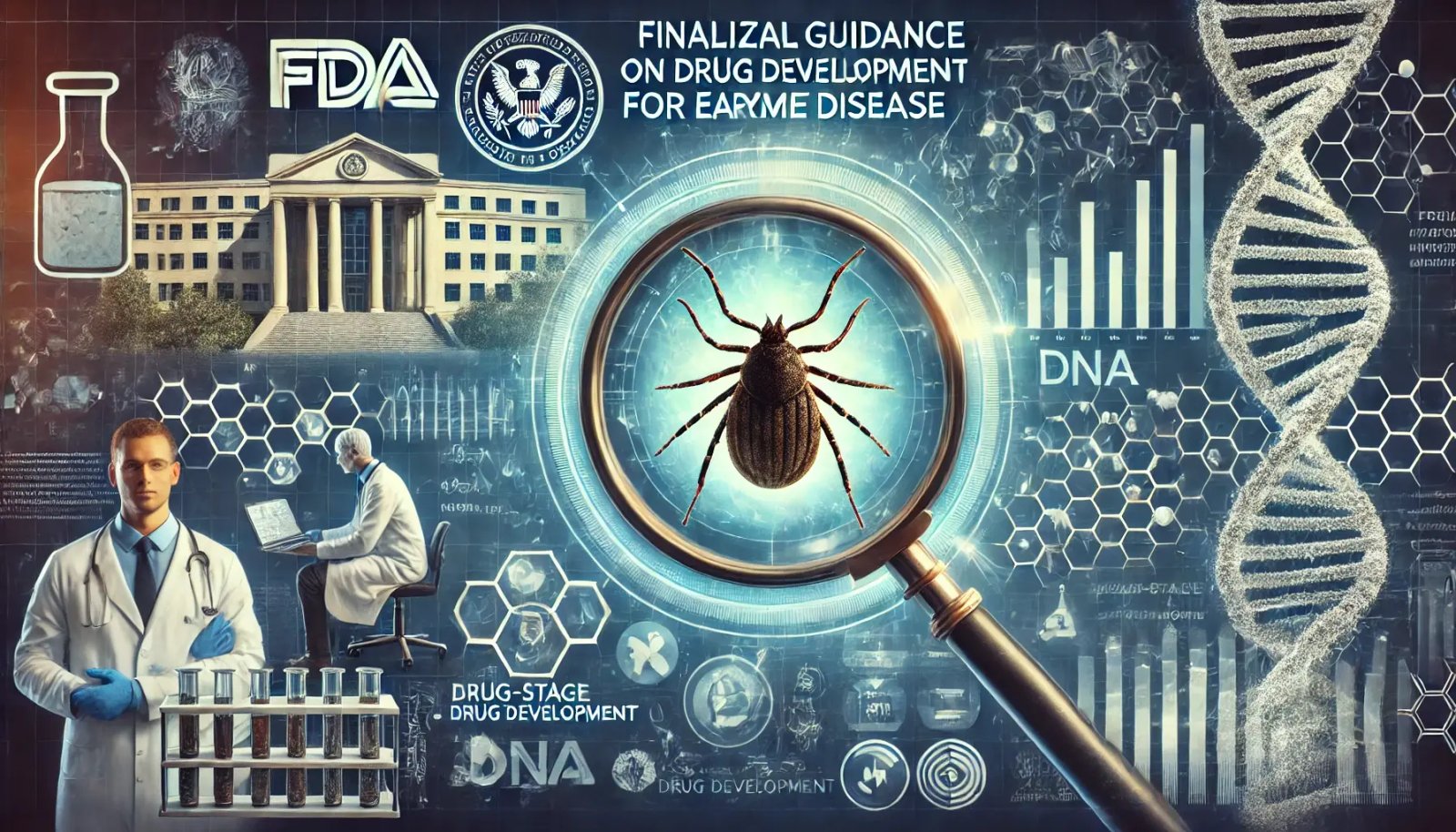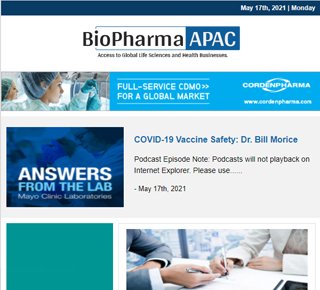FDA Finalises Guidance on Drug Development for Early Lyme Disease: A Strategic Signal for Industry Innovation
11 July 2025 | Friday | Analysis | By BioPharma APAC Desk

This finalised guidance serves as a blueprint for biopharmaceutical developers aiming to address early manifestations of Lyme disease—particularly early localized and early disseminated phases.
Understanding the Context
Lyme disease, the most common vector-borne illness in the United States, is predominantly caused by Borrelia burgdorferi. Its early stages often present as erythema migrans (EM), a tell-tale rash accompanied by fatigue, fever, and muscle aches. If left untreated, the infection can disseminate, resulting in more serious complications such as neurological and cardiac manifestations.
While antibiotics are effective when administered early, the development of more targeted, pathogen-specific therapeutics has remained a gap in the market—especially in light of concerns over antibiotic resistance and treatment failures in disseminated disease.
Key Takeaways from the Final Guidance
The FDA’s new guidance outlines specific expectations for companies undertaking drug development for early Lyme disease:
-
Clinical Trial Population: The agency encourages enrolling patients with confirmed EM rashes within one month of symptom onset, enabling early intervention and precise drug efficacy assessments.
-
Trial Design: Randomised, double-blind, placebo- or active-controlled studies are recommended, with clearly defined primary endpoints such as resolution of symptoms and lesion clearance.
-
Safety and Efficacy: The FDA advises robust safety monitoring, with particular attention to post-treatment Lyme disease syndrome (PTLDS) and other longer-term sequelae.
-
Inclusion of Disseminated Disease: Importantly, the guidance opens doors for including early disseminated Lyme cases, such as those with multiple EM lesions or mild neurologic/cardiac symptoms—indicating the agency’s flexibility in reflecting real-world disease progression.
This final guidance supersedes previous draft recommendations and reflects current scientific understanding and public health needs.
Results: What Developers Should Demonstrate
To meet regulatory expectations, developers must provide clear, quantifiable outcomes in early Lyme disease trials. The FDA expects data demonstrating:
-
Rapid resolution of erythema migrans: Typically within 7 to 14 days post-treatment initiation.
-
Improvement or resolution of systemic symptoms: Including fatigue, fever, and muscle pain.
-
Minimal recurrence or progression to disseminated Lyme: At least through 4–12 weeks post-treatment follow-up.
-
Favourable safety profile: Particularly compared to current antibiotic therapies.
-
Absence of post-treatment Lyme disease symptoms (PTLDS): Through follow-up analysis and patient-reported outcomes.
Sponsors are encouraged to incorporate microbiological endpoints and patient-centred outcome measures to capture the complete therapeutic impact.
Implications for Drug Developers
-
Regulatory Clarity = Accelerated Innovation
The final guidance gives developers a well-defined pathway for clinical trials in early Lyme disease, reducing regulatory uncertainty—a key barrier in rare and infectious disease areas. -
Opportunity for Special Designations
Given the disease's public health impact, drug candidates targeting early Lyme may qualify for Fast Track, Breakthrough Therapy, or Priority Review designations, depending on data strength. -
Competitive Edge for Specialised Biotechs
Niche biopharma firms focusing on infectious diseases now have a better chance to gain first-mover advantage by aligning pipelines with FDA’s defined expectations. -
Potential for Global Harmonisation
This FDA move may serve as a template for regulatory bodies in the EU and APAC, helping harmonise development strategies and accelerate global access.
Broader Public Health Impact
With over 470,000 estimated Lyme disease cases annually in the U.S. alone, this finalised guidance also signals the FDA’s commitment to modernising responses to neglected and emerging vector-borne diseases. The inclusion of both early localised and early disseminated disease in the guidance highlights the agency’s recognition of clinical complexity and variation in Lyme disease presentations.
Moreover, it sets a precedent for issuing disease-specific frameworks in other high-need infectious conditions.
Conclusion
The FDA’s final guidance on early Lyme disease drug development is more than a procedural update—it’s a strategic call to action. For developers, it’s time to accelerate pipeline alignment. For investors, it signals emerging opportunities in infectious disease innovation. And for patients, it marks progress toward safer, faster, and more effective treatments.
The full guidance document is now available on the FDA website under the Center for Drug Evaluation and Research (CDER).
Most Read
- How Health Systems Are Reshaping Drug Adoption, Partner Models, and Market Access in 2026
- Top 25 Biotech Innovations Redefining Health And Planet In 2025
- The New AI Gold Rush: Western Pharma’s Billion-Dollar Bet on Chinese Biotech
- Top 25 Biotech & Biopharma Leaders in Sustainable Innovation, 2025
- China’s Biopharma Dealmaking Surges in H1 2025, Driven by Record Licensing and Oncology Focus
- Chikungunya in China: How a “Forgotten” Arbovirus Found the Perfect Storm
- How Innovation Gaps in Biopharma Raise New Safety Concerns
- Smart Implants and the Future of Musculoskeletal Injury Treatment
- How Ethical Gaps in Psychiatry Could Undermine Biopharma Progress
- The Evolving Landscape of Women’s Health Innovation in the Asia-Pacific
- Using NLP-Driven Decision Support in Emergency Health Assistance
- Taiwan Steps Into the Global Spotlight With a New Cancer Therapy
- The Role of Unique Device Identification (UDI) in Tracing Medical Device Safety
- The Importance of a Patient’s Mental Health During Clinical Trials
Bio Jobs
- The State of Biotech and Life Science Jobs in Asia Pacific – 2025
- Avantor’s New CEO Ligner Aims to Unlock Global Potential and Deliver Shareholder Value
- AstraZeneca Commits $50 Billion to U.S. Expansion by 2030 in Biggest-Ever Global Investment
- Thermo Fisher, SAMRC, and South Africa’s Department of Science and Innovation Launch CATIR to Nurture Next-Gen Scientists
- Cube Biotech Appoints Former Sartorius CEO Dr. Joachim Kreuzburg to Board of Directors
- FDA’s AI Transition Marks a Turning Point in Drug Review: Industry Faces Pressure to Adapt Amid 20% Workforce Cut
- WuXi XDC Completes Mechanical Build of Singapore Bioconjugate Manufacturing Hub
News
Editor Picks











